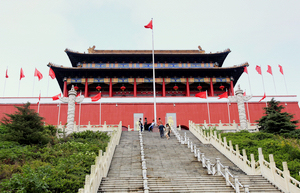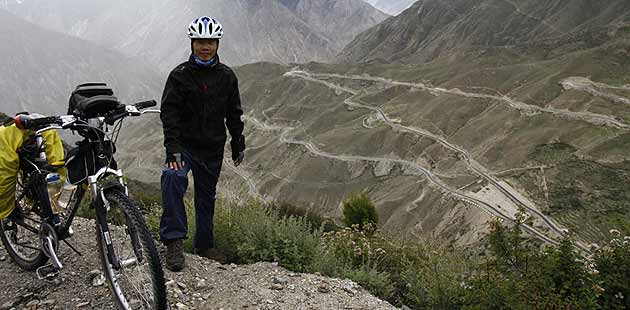|
|||||||||||
There is much, much more to building an international railway than slapping together thousands of kilometers of track.
Signals have to mesh, trains must be able to carry standard containers, rules and regulations need to be unified and a common language for drivers and engineers has to be agreed upon.
Then there is the practical matter of rail gauge. China's railways use standard gauge tracks that are 1,435 mm apart. Russia's tracks are gauged at 1,520 mm. Tracks in Malaysia, Vietnam and Cambodia are 1,000 mm.
In a report last year, the Asian Development Bank noted that linking the railway systems of Cambodia, China, Laos, Myanmar, Thailand and Vietnam "will require that the multitude of national technical standards and operational procedures converge". Leaders of those governments have targeted 2015 as the deadline for greater integration for their networks.
There are options, such as transshipment facilities or trains with adjustable axles.
But building tracks that can carry the same trains across multiple countries is only part of the problem. Perhaps a bigger concern, the bank said, is a lack of rolling stock (locomotives and cars for people and cargo), signals, telecom equipment and train control systems.
Another challenge is the technical protocols that allow for fast border crossings, which are needed for a truly integrated system. Information exchanges and connections with other modes of transportation will go a long way toward making a continental rail link more beneficial to economic growth and cultural integration.
It's the addition of intermodal transport - carrying goods across oceans by ship, long land distances by rail and cities by truck - that promises the biggest gains.
In a perfect world, goods are loaded into a container once and are unloaded only at their final destination.
A perfect world is still far away, but a few intermodal transport corridors in Asia link landlocked countries to seaports. Lianyungang, Shanghai, Tianjin and Qing-dao in China are examples.
Last year, 223,844 standard containers passed through the Alashankou and Dostyk stations on the border between China and Kazakhstan. Only two-thirds were Chinese exports; the rest came from elsewhere. More such corridors are in the works.
Now the least developed railway systems have a chance to avoid connectivity problems with other transport modes. The systems in the Greater Mekong Subregion will, in essence, be developed from scratch.
The gaps in connectivity present an opportunity for investors and private companies that have often been set aside by governments, which have driven the development of railway projects.
Private-public partnership is an avenue for funding that countries are increasingly considering. India, for example, used such partnerships effectively in turning its railway system from a perennial money loser into a profitable national venture.
Related Stories
Rail dream still on track to unite continents 2011-10-12 07:56
- US Senate passes yuan bill amid China's opposition
- China, Russia near deal on gas
- China, Vietnam focus on future ties
- China Red Cross changes leadership
- China, Vietnam sign maritime accord
- Chinese, Russian PMs pledge closer co-op
- Russia, China working on new energy routes
- Putin starts official visit to China
Hot Topics
Libya conflict, Gaddafi, Oil spill, Palace Museum scandal, Inflation, Japan's new PM, Trapped miners, Mooncake tax, Weekly photos, Hurricane Irene
Editor's Picks

|

|

|

|

|

|







